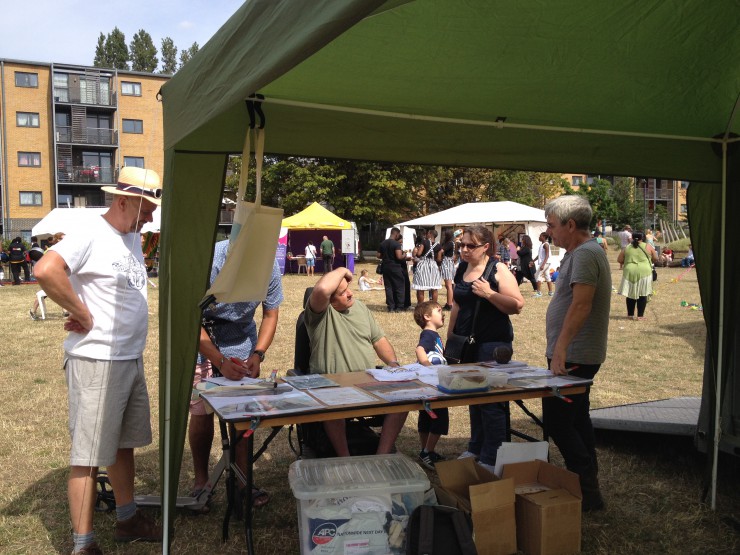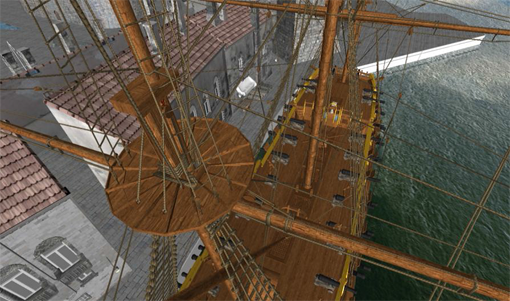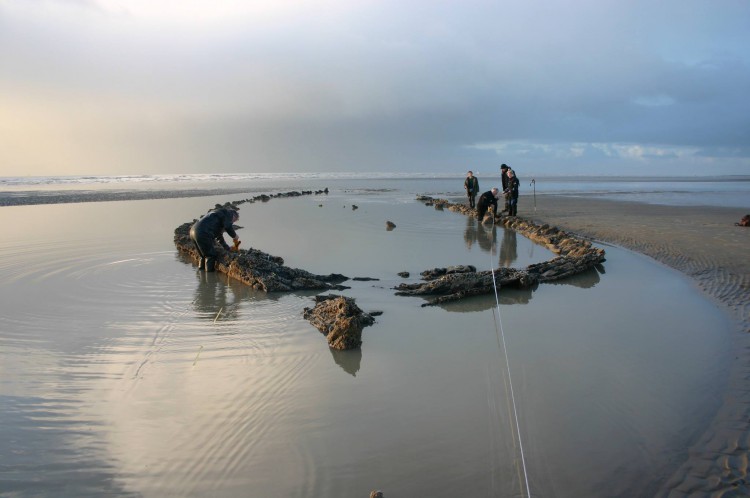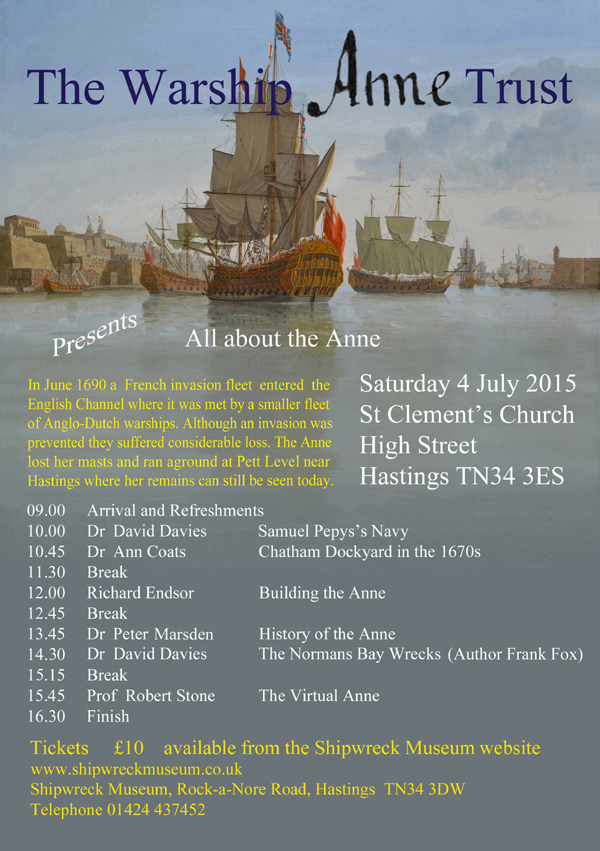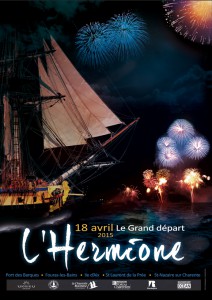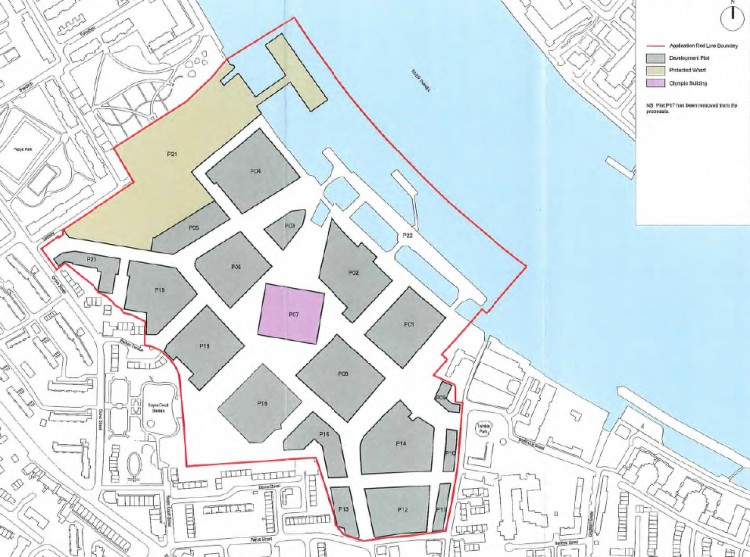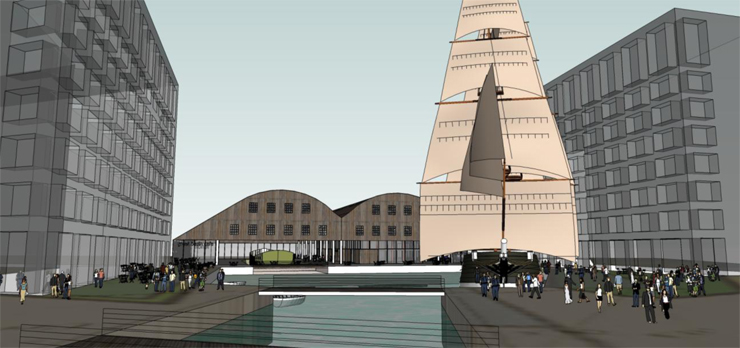It was great to meet you all at the Evelyn Community Festival last weekend – the weather could not have been better and it was lovely to meet some new faces and catch up with some of our long-time supporters. It’s always good to know that people are following our progress and keeping our project in mind, and it’s great to be able to spread the word about our plans even further into the local community.
Author Archives: news
See how the Lenox will be built!
We’re delighted to be able to share with you this breathtaking short film which demonstrates how the Lenox will be built and offers an up-close and personal insight into her structure.
The film was made by the Human Interface Technologies Team at the University of Birmingham, led by Professor Robert Stone, and was part of a project that was presented at a conference about the Anne, sister ship to the Lenox, which was held in Hastings this month.
While the Anne was the sister ship to the Lenox, the digital model used in this visualisation incorporates the detailed information about the ship’s construction that was compiled by historian Richard Endsor during his extensive research into the Lenox.
Best watched full screen!
A small group of researchers from the university developed a highly detailed virtual reality model of the Anne, in collaboration with the Shipwreck Museum in Hastings and using historical book references and paintings.
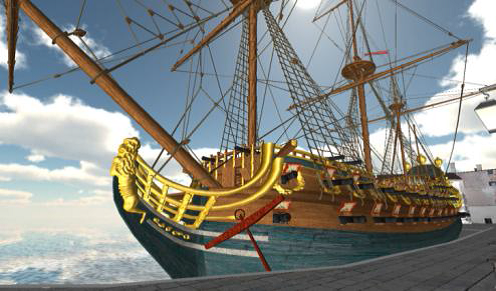
The University’s HIT Team specialises in advanced simulation technologies for defence, healthcare and heritage applications. Using historical reference books and naval paintings, the 3D model of the Anne was developed by two students visiting the HIT Team from Arts et Métiers, ParisTech, Laval in France, Cécile Thevenin and Emilien Bonhomme.
Questions raised over conflict of interest in feasibility study appointment
Updated February 2016: Subsequent to the completion of the feasibility report, the Lenox Project is happy to acknowledge that Buro Happold conducted the process in a fair and impartial manner. You can read the post about the conclusions of the study here.
Serious concerns have been raised about a potential conflict of interest after the GLA announced its intention to appoint Buro Happold – which has been working for Convoys Wharf site owner Hutchison Whampoa for many years – to the role of independent assessor for the Lenox Project feasibility study.
The main justification the GLA gave for its decision – that the firm was the one most likely to be able to complete the work within the time allowed – has already been undermined by the GLA agreeing to an additional month for ‘information gathering’ ahead of the study period.
What’s more the claim by the GLA that the bidding process was competitive has been brought into question, with some bidders not able to participate because of the short time scale set for preparing the bids, and a time extension granted to two participants only extended to a third bidder after a request from the Lenox Project.
Buro Happold has been involved with the Convoys Wharf site for 14 years, most recently working for Hutchison Whampoa carrying out studies for the environmental impact assessment for the proposed development. The director intended to lead the feasibility study is the same director responsible for work carried out for Hutchison Whampoa. Furthermore, Buro Happold intends to seek advice on the heritage impact from archaeologist Duncan Hawkins of CgMs, another direct employee of the current site owner.
Given that Buro Happold has worked directly for Hutchison Whampoa in the past, and is likely to be employed by them again in the future, we strongly contest the GLA’s assertion that there will be no conflict of interest in BH fulfilling the role of independent assessor for the feasibility study.
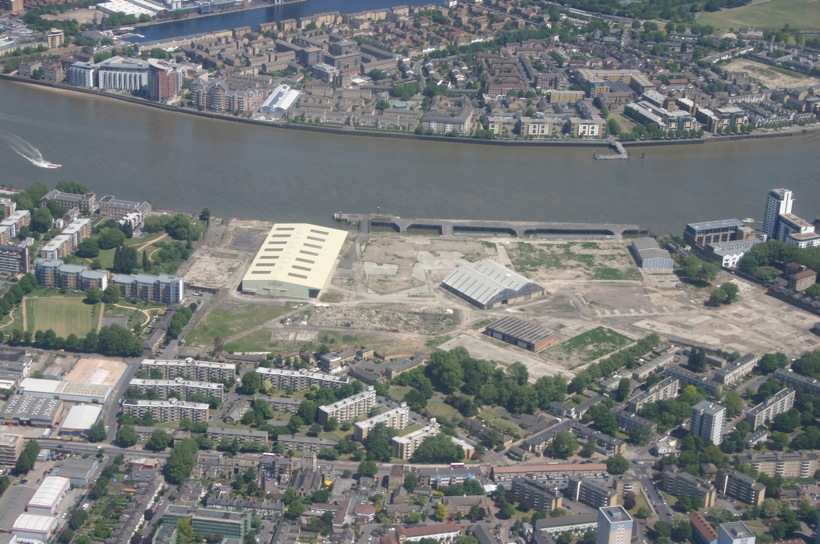 We have also made clear to the GLA our concerns about the way in which the bidding process was managed; the lack of clarity in the management of the process, the timescales, and the basis on which decisions have been made.
We have also made clear to the GLA our concerns about the way in which the bidding process was managed; the lack of clarity in the management of the process, the timescales, and the basis on which decisions have been made.
The GLA invited 11 companies to pitch for the contract, which involves carrying out an feasibility study into four options on two sites for accommodating the Lenox Project within Convoys Wharf. The GLA has dictated that the feasibility study must be completed within a tight timescale of just two months.
Both the site owner Hutchison Whampoa and the Lenox Project CIC were given the opportunity to put forward two consultants to be invited to pitch. The Lenox Project proposed Witherford Watson Mann Architects and Christopher Garrand Consultancy; Hutchison Whampoa proposed Aecom and Buro Happold. The GLA also issued the invitation to other consultants on its own list (Arup, Capita, WSP, Burns Owen Partnership, The Exhibitions Team, Dr Eric Kentley and Jura Consultants), none of which responded with a bid.
Invitations to pitch were issued on 24th April, with submissions required by close of business on 1st May – just a week later.
Of the 11 companies invited to bid, only two – Aecom and Buro Happold – were able to submit a bid by the deadline. One of the other bidders said that they were not able to submit a bid within such a short pitch time, and that three weeks would have been more reasonable for the work required.
After the deadline had passed, the GLA informed us that it had requested supplementary information from both the bidders, some of which related to potential conflict of interest (a matter that bidders were required to address in their pitch document). They were being allowed an additional two weeks to provide this information.
At the Lenox Project’s request, one of our nominees was allowed the same additional time to submit a bid and managed to do so. The revised deadline for submitting pitches was 22 May – a month after the invitations were issued.
On 9th June we were advised that the bids had been assessed and were supplied with comments as follows:
Aecom – ranked second
Aecom has presented a generally well-balanced pitch which demonstrates excellent experience in delivering large scale projects of a similar multi-disciplinary nature. Notwithstanding the anticipated need to outsource viability work, the ability to draw on a wide range of specialists in-house would be likely to support timely assessments and good value for money. Furthermore, based on the information available, GLA officers are satisfied that there would be no conflict of interest, and that Aecom could deliver an impartial feasibility study to programme.
Buro Happold – ranked first
Buro has presented a generally well-balanced pitch, demonstrating excellent understanding of the site and sound experience in delivering large scale projects of a similar multi-disciplinary nature. The ability to draw on a wide range of specialists in-house would be likely to support timely assessments and good value for money. Furthermore, the working knowledge of the site that Buro already has is likely to allow for a more detailed and rigorous assessment within the budget and time allowed. Based on the information available, GLA officers are satisfied that there would be no conflict of interest, and that Buro (working also with CgMs) could deliver an impartial feasibility study to programme.
Christopher Garrand Consultancy – ranked third
CGC has presented a generally sound pitch. Whilst the balance of the team is weighted predominantly towards heritage experience/disciplines, the skill set of the identified project team appears to be capable of addressing the key areas of brief (albeit the relationship between project lead and support consultancy appears somewhat ad hoc). The firms forming the project team (CGC, Lathams, Arup and Press & Starkey) have demonstrated their ability to deliver various heritage-led projects individually, as well as a number in affiliation. Whilst GLA officers are satisfied that there would be no conflict of interest, based on the pitch response officers are not certain that the project programme would be adhered to.
Following the announcement of the preferred bidder, the GLA then granted Buro Happold an additional month for ‘information gathering’ ahead of the official start of the study – a move which endorses our claim that the programme for the feasibility study is too short. During the Section 106 negotiations we raised our concerns with the GLA about the proposed timescale, but no revisions were made.
Had this ‘information gathering’ allowance been made clear in the terms of the original bidding document, more bids would undoubtedly have been returned, and the process would have been more competitive. We are also concerned that granting the extra time after the contract has already been awarded makes the process thoroughly unfair to the other bidders.
Our other main concern is the lack of emphasis on heritage expertise and heritage-related placemaking in the winning team. The third-placed team has a strong background in heritage-led projects, as the GLA acknowledged in its assessment of the bids, and yet the value of this is not given sufficient weight. The study is intended to assess the most feasible location for a heritage-led community project, and it is reasonable to suggest that expertise in heritage projects should be the main requirement of the lead firm.
Buro Happold’s bid referred to the restoration of the Cutty Sark – in which the firm was employed as structural engineer – as the sole example of its involvement in a heritage project. This raises serious questions over the firm’s experience in relevant fields.
Their continued employment by Hutchison Whampoa not only risks a conflict of interest, but makes it extremely difficult for Buro Happold to be regarded as independent by outside observers. As a result, the conclusions of the feasibility study would be put under greater scrutiny than would otherwise be necessary; in our view this brings into question the firm’s suitability for the role of independent assessor.
All about the Anne – learn about the sister ship of the Lenox
The Anne was the sister ship of the Lenox, and her wreck, which lies off the English coast at Pett Level near Hastings, is owned by the Warship Anne Trust; part of the Nautical Museums Trust that owns the Shipwreck Museum in Hastings.
King Charles II had the Anne built at Chatham by Phineas Pett II and she was launched in 1678. She was also one of the 30 ships programme and was visited by King James II in 1687, before she carried a German princess to Lisbon to be the bride of King Pedro II of Portugal. It is believed that she was named after James II’s daughter Anne who later became Queen.
She was run ashore in July 1690 after being seriously damaged by the French navy in the Battle of Beachy Head, and was ordered to be burnt by her Captain, John Tyrrell to stop her being taken as a French prize. During that battle several Dutch ships were lost, but this was the only English fleet casualty.
Last year some of our team went down to Hastings on a very low tide to help the Shipwreck Museum with some surveys of the ship’s remains.
The Shipwreck Museum is hosting a one-day seminar about the Anne on Saturday 4th July at St Clement’s Church in Hastings. As well as a presentation by Lenox expert Richard Endsor, the programme includes David Davies, Ann Coats, Peter Marsden and Robert Stone.
Countdown to L’Hermione’s voyage to America
The project to construct the replica ship Hermione in Rochefort, France, was one of the main inspirations for the Lenox Project.
It is thrilling to see her now in the final stages of preparing to set off on her first voyage – across the Atlantic to the USA! After two decades of construction she will set sail on 18th April to cross the Atlantic and visit 11 ports on the eastern seabord of the USA.
The journey will start from the mouth of the River Charente, in Port des Barques, where Lafayette boarded on March 10th, 1780. The transatlantic crossing is expected to take 27 days in total, before making landfall at Yorktown, Virginia.
As the Hermione moves up the Eastern seaboard, she will be accompanied by a range of pier side activities. These include in some ports a traveling exhibition and a heritage village that will be accessible to the public. The Hermione Voyage 2015 is part of an expansive outreach programme with cultural events, exhibitions, and educational programmes that celebrate the trip and mark its progress.
The ‘grand depart’ takes place on 18th April and you can follow the ship’s progress on the website and on the Hermione Facebook page.
Feasibility study for the Lenox Project
In a few weeks’ time, the GLA will invite bids from independent assessors to carry out a study to determine the most feasible location on the Convoys Wharf site for the Lenox Project. This study forms part of the provision made by the Mayor of London for the Lenox Project as part of his decision to approve the planning application.
The full details of the invitation to pitch can be found in Annex 4 of the Section 106 agreement (starting on page 163) but the main points are outlined below.
The fee for the study is £20,000; this is being contributed by developer Hutchison Whampoa as negotiated by the GLA.
The assessor is only required to consider two potential locations on the site; the Olympia Building (pink on the map) and the Safeguarded Wharf (beige).
Our request that the assessor should be allowed to consider other potential locations was rejected by the Mayor last year.
The brief states that the Lenox Project requires a weatherproof area for shipbuilding of a minimum 52m long and 22m wide; it must be 16.5m high with additional clearance for a gantry crane. The project also requires space for storage, workshops and a visitor centre, and public access to these spaces is crucial for revenues.
The assessor is also only required to consider two scenarios for each potential location.
Olympia Building scenario 1: main shipbuilding in half of the Olympia Building, with waterway access required to the Thames for launch. Occupation of half the building at market rent for cultural use for a minimum term of 10 years and up to a maximum of 20, if a greater term is required to secure funding. Option for a subsequent lease at market rent by mutual agreement.
Olympia Building scenario 2: main shipbuilding in half of the Olympia Building, with waterway access required to the Thames for launch. Occupation of half the building at peppercorn rent for a minimum term of 10 years and up to a maximum of 20, if a greater term is required to secure funding, provided that any period over the initial 10 years is at market rent for cultural use. Option for a subsequent lease at market rent by mutual agreement.
Safeguarded Wharf scenario 1: main shipbuilding on 3,975sqm of safeguarded wharf with waterway access to the Thames for launch. Occupation of the safeguarded wharf at a peppercorn rent for a minimum term of 10 years and up to a maximum of 20, if a greater term is required to secure funding, provided that any period over the initial 10 years is at market rent for cultural use. No option for a subsequent lease due to existing wharf policy requirements.
Safeguarded Wharf scenario 2: main shipbuilding on 3,975sqm of safeguarded wharf with waterway access to the Thames for launch and the applicant making a contribution to the cost of waterway access. Occupation of the safeguarded wharf at a peppercorn rent for a minimum term of 10 years and up to a maximum of 20, if a greater term is required to secure funding, provided that any period over the initial 10 years is at market rent for cultural use. Option for a subsequent lease at market rent by mutual agreement, if there is a change in wharf policy requirements or the safeguarded wharf is de-designated.
The assessor will be asked to rank the four options in terms of their feasibility for delivering the Lenox Project, considering the influences of a number of factors. These include project delivery (extent of enabling works required, practicality of accommodating the project, and of delivering materials, compatibility with the site master plan, practicality of launch and of securing a permanent berth); project viability (costs for enabling works, ship building, future maintenance and potential for visitor attraction); heritage impact; environmental impact and impact on the approved Convoys Wharf master plan.
Once an assessor is chosen, they will have six weeks in which to carry out the research and write a draft feasibility report, after which it will be circulated for review by ourselves and Hutchison Whampoa.
A final report will then be produced by the assessor, having regard to any comments made in the review process.
Assuming that the feasibility study proceeds to the GLA’s proposed timeline, the final report should be published towards the end of July.
Section 106 provisions for the community projects
A new phase begins for community groups The Lenox Project and Sayes Court Garden, with the signing of the Section 106 agreement that forms part of the Convoys Wharf planning application. Developer Hutchison Whampoa can now begin construction on the site of the former Deptford Dockyard.
The Lenox Project must now await the outcome of a feasibility study that will assess four options for the Lenox Project’s presence on the site – two in the Olympia Building and two on the Safeguarded Wharf – and will rank them accordingly.
Both the Lenox Project and Sayes Court Garden must bid for funding from the Community Project Contribution fund to assist the preparation of their business plans. These must be approved by the developer and Lewisham Council before the projects can begin the process of negotiating leases for the site.
We acknowledge the efforts that have been made on our behalf by planning officers from the Greater London Authority and Lewisham Council, however we continue to have reservations about the future viability of our project under the terms that are proposed.
Throughout the negotiation process we put considerable effort into trying to persuade the GLA to extend the scope of the feasibility study to include the whole site, rather than focussing purely on two options, as we believed the restricted brief did not accord with the Mayor’s intention when he imposed the condition. In the GLA planning report that was published alongside the final Section 106 agreement, the Mayor has confirmed that the terms as drafted do accord with his intentions, and we are no longer in a position to pursue this matter.
As a result of negotiations by the GLA, the lease terms that the developer is required to offer the Lenox Project have been marginally improved, but still fail to include any obligation to provide us with a secured long-term presence on the site.
It is entirely at the discretion of the developer whether the Lenox Project will be allowed to remain on the site once the ship has been built.
The matter of long-term uncertainty is still a serious issue for the viability of the Lenox Project.
Now that the Section 106 has been concluded, and having sought legal advice, we believe that the most productive way forward for us is to continue to make every effort to engage in a positive manner with the owner, the GLA and Lewisham Council to find a solution that will enable our project to succeed, if one exists within the limitations that have been imposed.
We await the outcome of the feasibility study, at which point we will make a decision on how to proceed.
For more information please see the documents that are linked below:
Signed 106 agreement
Clauses relating to the Lenox Project (page 149)
Clauses relating to The John Evelyn Centre and Sayes Court Garden (page 154).
Feasibility study scope Annex 4 (page 163)
Lease terms for Lenox Project Annex 5 (page 171)
Lease terms for John Evelyn Centre Annex 6 (page 174)
GLA planning report on the obligations secured on behalf of The Lenox Project and Sayes Court Garden
Convoys Wharf Section 106 Legal Agreement Now Signed
On 10th March the Mayor of London granted outline planning permission for the Convoys Wharf development. The associated section 106 legal agreement was also signed on this date. The Lenox Project CIC will issue a press release shortly commenting on the final document and setting out the next stages of the process. A link to the GLA website is provided here; all of the planning documents including the signed section 106 document are available on the GLA website page. A direct link to the section 106 document is here.
Support us at Waitrose throughout February!
We are delighted to announce that Waitrose in Greenwich has selected us as one of their three local good causes to participate in their Community Matters charity scheme during the month of February.
During the whole of this month, anyone shopping at Waitrose will be able to show their support for us by dropping the green token into our box next to the checkouts. At the end of the month, a total of £1,000 donated by the Greenwich branch will be divided between the three charities based on the proportion of tokens in each box.
 We are up against some stiff Greenwich competition – namely the Royal Observatory and the Old Royal Naval College – but we hope that we will get a strong vote not only from our Deptford supporters but also from our Greenwich neighbours.
We are up against some stiff Greenwich competition – namely the Royal Observatory and the Old Royal Naval College – but we hope that we will get a strong vote not only from our Deptford supporters but also from our Greenwich neighbours.
They are all great causes to support, but we hope you will choose ours as being the one of greatest need!
So don’t forget to give us your token – and if the checkout staff forget to give you one, don’t be embarrassed to ask!
Further extension to the signing of the section 106 agreement for Convoys Wharf
The Mayor of London has authorised a seventh extension to the deadline for completion of the Section 106 agreement relating to the Convoys Wharf planning application, taking it to 27th February.
The planning report, which was issued on 28th January by the GLA, states that the extension is partly related to consideration of representation received from both the Lenox and Sayes Court Garden Projects. However, on this occasion expert advice is also being sought regarding the affordable housing review mechanism.
A link to the GLA planning report dated 28th January 2015 is here.

